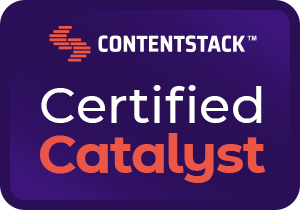How To Get Started with Serverless Architecture
2023-01-15A Practical Guide to Implementing Serverless Architecture: Cost-Efficiency and Beyond
Navigating the landscape of modern technology can be challenging, especially for startups and small engineering teams with limited resources. The serverless architecture has emerged as a potent solution to these challenges, providing cost-effective, scalable, and efficient ways to develop and deploy software.
So, let's take a journey through the essential steps to implement serverless architecture and demonstrate how it can help limit expenses and reduce the need for specialized DevOps skills.
Step-by-Step Guide to Implementing Serverless Architecture
Step 1: Understand Your Requirements
First and foremost, you need to comprehend your application's requirements. Different applications have unique demands, and understanding these will help you identify which parts of your application can benefit most from going serverless.
Step 2: Choose the Right Serverless Platform
There are various serverless platforms available, including Amazon Web Services (AWS) Lambda, Google Cloud Functions, and Microsoft Azure Functions. Evaluate the pros and cons of each platform, considering aspects such as cost, ease of use, scalability, and compatibility with your existing tech stack.
Step 3: Break Down Your Application
Decompose your application into a collection of functions that can be independently deployed and managed. These should correspond to discrete tasks within your application, allowing for greater scalability and easier debugging.
Step 4: Implement Event-Driven Functions
Serverless architecture is event-driven. This means your functions should be designed to respond to specific events, such as HTTP requests, changes in database records, or custom events defined by your application.
Step 5: Leverage Managed Services
Serverless isn't just about functions; it's also about using managed services for tasks like storage, databases, and authentication. Leveraging these services can drastically reduce the amount of code you need to write and maintain.
Step 6: Monitor and Optimize
Finally, once your serverless architecture is up and running, it's vital to monitor performance and continually optimize your functions for cost and efficiency. Make use of available serverless monitoring tools and ensure that you're not over- or under-provisioning resources for your functions.
How Serverless Architecture Helps Startups and Small Teams
Implementing serverless architecture offers several advantages that can particularly benefit startups and small engineering teams:
Cost-Effectiveness Serverless architecture follows a pay-as-you-go model, meaning you only pay for what you use. This approach can significantly reduce operational costs, making it an ideal choice for startups working within a tight budget.
Reduced DevOps Needs Since serverless platforms manage server operations, startups no longer require extensive DevOps expertise, reducing hiring and training costs. Instead, the engineering team can focus on application development, fostering more agile and innovative processes.
Scalability Serverless platforms handle scaling automatically, accommodating fluctuating workloads without manual intervention. This capability ensures startups can seamlessly scale up their operations as they grow, without worrying about server capacity.
Faster Time-to-Market With the burden of server management lifted, startups can speed up the software development lifecycle. This enables faster product releases and more time to react to market changes or customer feedback.
Increased Productivity By abstracting away infrastructure management, serverless architecture empowers small engineering teams to focus on delivering value through code, leading to increased productivity and enhanced job satisfaction.
To sum up, serverless architecture is more than just a technological trend. It's a strategic approach that allows startups and small teams to build robust, scalable, and cost-effective applications. By understanding and implementing serverless best practices, you can harness its potential to drive your business forward, regardless of your size or resources. It's the era of lean, efficient, and fast-paced software development, and serverless is leading the charge.
Step 7: Continuous Improvement
In the world of serverless architecture, you must always strive for continuous improvement. Regularly revisit your code to optimize its performance. Make use of analytics to understand how your functions are being used and where you can make improvements.
Step 8: Security Measures
Security is paramount in serverless architectures, and thankfully, most serverless providers offer robust security measures. However, it's essential to understand and implement best practices like managing secrets, limiting permissions, and protecting against common web-based threats.
Step 9: Leverage the Power of Microservices
If it suits your project, consider adopting a microservices architecture. This can work very well with serverless computing as each function corresponds to a microservice, resulting in a highly scalable and efficient system.
Step 10: Keep Learning and Experimenting
Serverless is still a relatively new field, with best practices and patterns continuing to emerge. Stay on top of the latest trends, engage with the serverless community, and don't be afraid to experiment with new ideas. It's through experimentation and continual learning that you'll get the most out of serverless.
By now, you should have a good grasp of implementing a serverless architecture and how it can be a game-changer for startups and small engineering teams. It's time to take the plunge and begin your serverless journey. Embrace the future, limit expenses, and unleash your team's full potential. Remember, every significant technological innovation started with a small step. Your step towards a serverless future might just be the leap your business needs.




